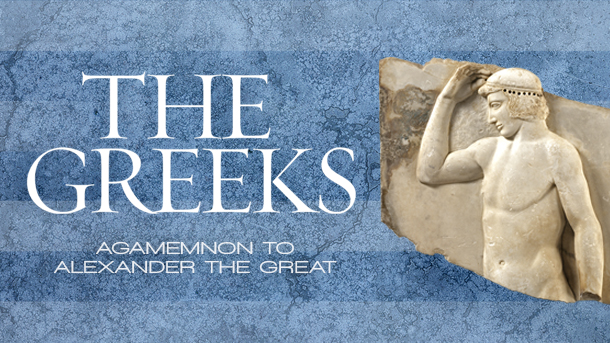Now on Display: “The Greeks” at the National Geographic Museum
photo courtesy of nationalgeographic.com
A poster introducing “The Greeks” at the National Geographic Museum. The exhibition is on display from June 1 to Oct. 10.
July 27, 2016
This weekend, my younger cousins and I visited the National Geographic Museum to view an exhibition called “The Greeks: Agamemnon to Alexander the Great”. Running from June 1 to Oct. 10, “The Greeks” showcases over 500 artifacts representing 5,000 years of Greece.
Personally, I have a moderate interest in Greek history, though I do not know a lot about it. Thus hearing about the exhibition provided the perfect opportunity for me to learn about the topic. However, I was not entirely sure what aspects of ancient Greek life would be on display: would there be more artifacts about war, rulers, art?
Upon entering each of the rooms in the exhibition, I was greeted by a plethora of cases and a description of the time period the artifacts in the room are from. There are brief but detailed descriptions of nearly every artifact. In addition, a few artifact replicas were attached their display cases’ exteriors, so visitors can get a closer look at items used by the ancient Greeks. My favorite sections ended up being about the Olympics, though I also enjoyed viewing the myrtle crowns worn by some of the ancient Greek royalty.
Though this is most likely due to my lack of knowledge in Greek history, or my favor for visual learning, I began to lose interest about halfway through the exhibit. My cousins too, who were at first eager to learn about the artifacts, were getting antsy. There is no doubt that getting to see a set of artifacts, most of which that have never been displayed outside of Greece, is pretty interesting. However, tools and swords, which occupied most of the exhibition, are not exactly visual spectacles, and sections on art and architecture are sparse. Overall, in order to have fully appreciated the exhibition, I would have needed to have spent a long time reading artifact descriptions, paragraphs of text displayed on the walls, and video monitors.
I would recommend this exhibition to anyone with a deeper-than-mild interest in ancient world or Greek history. Admission costs $12 for students, and “The Greeks” is the only exhibit in the museum, not counting the national park photography in the neighboring building.






